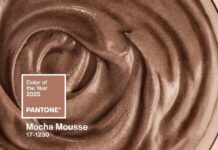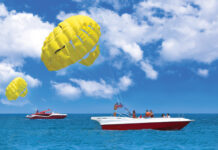By Cindy Mulla, Public Relations/Education, Beach Mosquito Control District
 The summer heat is on, afternoon showers produce temporary relief until the humidity kicks in, adding a new dimension to the potential population explosion. But never fear before things swarm out of control, there is a scientific-based solution already strategically incorporated and used to scrutinize each situation: Integrated Mosquito Management (IMM). What is IMM and what is involved?
The summer heat is on, afternoon showers produce temporary relief until the humidity kicks in, adding a new dimension to the potential population explosion. But never fear before things swarm out of control, there is a scientific-based solution already strategically incorporated and used to scrutinize each situation: Integrated Mosquito Management (IMM). What is IMM and what is involved?
Integrated Mosquito Management is the driving force for successful mosquito management. There are seven main joint components that when combined and used together successfully control both nuisance mosquitoes and those that have the potential to spread mosquito-borne disease.
Mosquito surveillance is key. We need to understand and know what is out there before beginning proper control measures. Collection of both larval and adult mosquito population data is key to controlling mosquito populations.
Larval surveillance is the collection of the aquatic life cycle state of the mosquito. Technicians survey/map breeding areas. This includes manually taking individual water samples to look for active breeding sites with the presence of larvae. If larvae are found, they are treated. Next, samples are delivered and speciated. This method allows for controlling the populations before becoming pestiferous adults. It is a terrific way to control mosquitoes biologically and to lower the potential risk of mosquito-borne disease.
Adult surveillance uses a variety of adult mosquito trapping methods to collect species data, to figure out where mosquitoes are breeding, and whether there is a disease risk. This data can also decide the method to use for adult mosquito control. Sentinel chickens are another method to check for mosquito-borne disease. Weekly blood samples collected from chickens placed strategically across our district are used as an indicator of when and where diseased mosquitoes are active in an area plus it allows our administration to make decisions to treat the problem before it amplifies.
Source reduction is the effective elimination or method of control for larval habitats. Examples are dumping out a bucket of water, draining a kiddie pool, disposing of trash holding water or unclogging a culvert to prevent pooling of standing water. This is an important part of IMM, and everyone should try their best to assist mosquito control by doing their part to eliminate breeding sites on their property.
Larviciding (control of larvae): there are factors that can inhibit source reduction making it impossible to eradicate every mosquito breeding location. The next step in IMM is mosquito larval control measures. Examples are the use of screens on rain barrels and community trash and standing water clean-up programs. When these do not work, mosquito control will use Gambusia holbrooki, also known as mosquito fish, as a natural biological reoccurring control method. These fish need minimal maintenance, are self-sustainable, a remarkable, and successful form of control for mosquito populations. Another safe organic biological control method is the use of a group of natural bacteria in products that only target mosquito larvae. Dispersing larvicide products can be either aerial or by ground applications. They are safe to use and pose no threat to mammals, fish, birds, or other living organisms. These products are available for purchase at local stores too. The use of growth regulators is also another method of larval control. They prevent the larvae from reaching the third stage of mosquito development, the pupa.
Adulticiding (control of adults) is the method used to control adult insect populations. No matter how pro-active mosquito control is with source reduction and larviciding, adult mosquito populations still can rise due to weather events and other environmental factors. Adult mosquito surveillance data collected and susceptibility to specific pesticide products will decide the type to use and the method of application whether aerial or ground Ultra-Low-Volume ground adulticide.
Monitoring the insecticide resistance level is extremely important when figuring out which species of mosquitoes are developing or have developed a resistance to certain chemical(s) in pesticides. Resistance tests are conducted by using Cage Trials or Bottle Bioassay tests. Due to the limitation of products available in our toolbox, rotation of products is essential for good control.
Public educational outreach and education is essential for all ages, effective communication, positive public health, and community support. Teaching everyone about mosquito awareness, life cycle, habitats, source reduction, how to avoid mosquito bites and the prevention of spreading mosquito-borne disease is key to solid integrated mosquito management program.
Current data collection and maintenance of historic data are critical parts of a successful Integrated Mosquito Management program. Having this information available at our fingertips is essential because we can learn from the past to improve the quality of mosquito control and public health. Whether it is surveillance for disease, new species introduced to the area, GPS coordinates of outbreaks, weather events, breeding sites, trends in breeding, surveying/mapping or the regulatory compliance of product usage we need every piece of evidence to support new developments.
Beach Mosquito Control District needs Panama City Beach area residents and visitors to continue to be a part of our Integrated Mosquito Management team by practicing source reduction around your property, being responsible by wearing insect repellent and contacting us with any mosquito questions/concerns at
(850) 233-5030 or at www.pcbeachmosquito.org. Communication is key for a successful Integrated Mosquito Management program.

















































